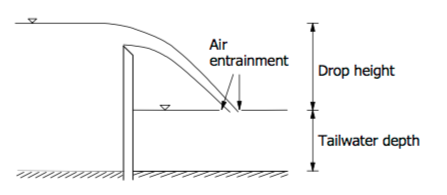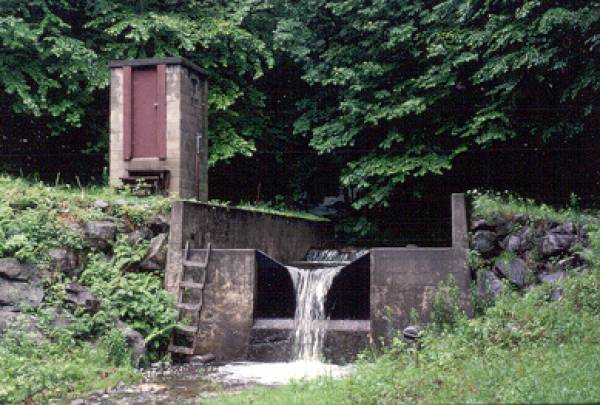This website uses a variety of cookies, which you consent to if you continue to use this site. You can read our Privacy Policy for
details about how these cookies are used, and to grant or withdraw your consent for certain types of cookies.
The Use of Thin-Plate Weirs for Downstream Aeration
A key parameter in measuring water quality is Dissolved Oxygen (DO). DO is often used as a quality of water indicator for water used by people or which serves as a habitat for aquatic flora and fauna. While it has been known that weirs can affect DO levels, a systematic investigation of how weir notch shape and fall height can affect oxygen transfer efficiency was not undertaken until 2000 by researchers at the Firat University in Elzig, Turkey.

Tailwater Depth
Avey and Novak (1978) had previously determined that optimum downstream depths should be 0.6 times the drop height (h) to ensure maximum aeration efficiency. Beyond 0.6 h and the aeration efficiency remained constant.
The residency time of entrainment of the nappe air bubbles directly affects the oxygen mass transfer. But beyond a given depth, there is a limit to the transfer as the penetrating air bubbles are limited in how deep they can travel.
Drop Height
Oxygen transfer is sensitive to the drop height across the weir structure. At lower drop heights, the nappe is relatively smooth and air entrainment takes place mainly at the surface of the downstream pool.
As the height increases, the nappe becomes rough, then oscillating, and the ultimately it breaks up into discrete water droplets. This breakup of the nappe reduces its penetration into the downstream pool, reducing the contract time between the air bubbles and the water –reducing the aeration efficiency.
Weir Discharge
Aeration efficiency varies with the discharge rate. In general, aeration efficiency increases at a constant rate as the discharge decreases. However, at very low discharges, the nappe is more apt to break up as the drop height increases.
Effects of Weir Notch Shape
For each weir notch shape, calculations were made as the overall oxygen efficiency transfer rate and the optimal drop height at which it occurs.
Rectangular Weirs
- The rectangular weir had the lowest oxygen transfer efficiencies.
- The greatest oxygen efficiency was 0.37, at a discharge of 1 l/s, and a drop height of 0.9 m.
- The rectangular weir was found to be a relatively poor aerator.
Trapezoidal / Semi-Circular Weirs
- The trapezoidal and semi-circular weirs were found to be in general agreement.
- The greatest oxygen transfer efficiency was 0.41, at a discharge of 1 l/s, and a drop height of 0.9 m.
Triangular (V-Notch) Weirs
- Greatest oxygen transfer efficiency.
- Oxygen transfer efficiency was 0.5 at a discharge of 2 l/s, and a drop height of 0.9 m.
- Oxygen transfer efficiency was 0.48 at a discharge of 1 l/s, and a drop height of 0.9 m.
- Air entrainment and turbulent mixing was greater than the other weir types.
Image: Geocaching
Source: Aeration Performance of Weirs
Related Blog Posts
Explore more insights in our blog.

LOCATIONS IN ATLANTA, GA & BOISE, ID


